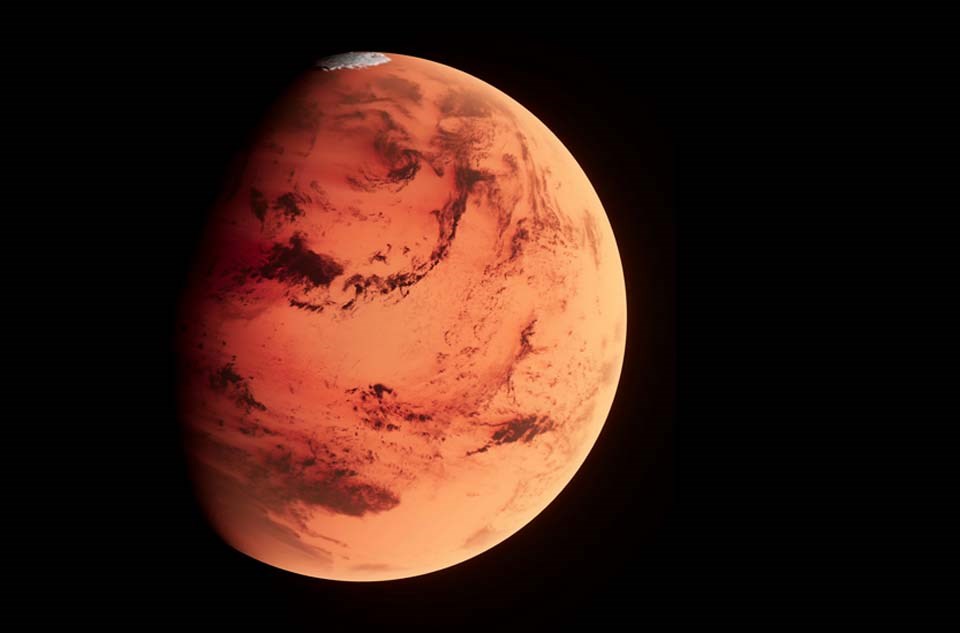The moon at the beginning of August is at first quarter and reaches apogee of 404,161 km. On Aug. 3, Antares, the bright red star in Scorpius, is 0.6 degrees north of the moon. Full moon is Aug. 9. Aug. 12 finds both Saturn and Neptune four and three degrees south of the waning gibbous moon, respectively. Aug. 16, the last-quarter moon is 0.9 degrees north of the Pleiades (M45). Aug. 19 has Jupiter five degrees south of the waning crescent orb, while Venus takes up that post on the following day. The moon and Mercury hover around the Beehive Cluster (M44) Aug. 21. The moon is new Aug. 23. Mars is three degrees north Aug. 26; Spica is 1.2 degrees north Aug. 27; and the moon reaches first quarter Aug. 31. Antares joins our satellite Aug. 31, an occultation in the extreme south — for northerners, the bright red star in Scorpius is only 0.7 degrees away.
Mercury is in front of the sun until mid-month, when it gradually becomes visible in the early morning eastern sky. Greatest elongation west occurs Aug. 19th, and then the speedy planet continues its orbit to behind the sun.
Venus and Jupiter are poised to meet up in Gemini in the early dawn twilight in mid-August – a magnificent conjunction of the sky’s two brightest planets. They pass within one degree of each other Aug. 12, the night of the annual Perseid meteor shower (see below). Aug. 20, the very thin crescent moon joins up with the planetary pair in the dawn sky.
Mars is an evening object, hovering among the stars of Virgo, but you have to be quick about catching the Red Planet, as it’s right near the horizon at sundown. The waxing crescent moon slides by Aug. 25-26.
Jupiter is in Gemini with Venus, as described above. The two make a splendid pair for several days before and after Aug. 12.
Saturn is in conjunction with Neptune Aug. 6 – the second in a series of three, with the final one occurring in mid-February 2026. They might steal some of the Perseid meteor show when the Ringed Planet and Neptune join up with the moon on the night of Aug. 12.
Uranus rises near midnight, remaining in the night sky until dawn’s early light.
Neptune is a telescopic target all through the night. It rises at sundown and sets in the early morning. As stated above, Saturn joins up with the blue planet Aug. 6.
The Perseid meteors peak the night of Aug. 12. That’s when Earth passes through the cloud of tiny particles left behind by Comet 109P/Swift-Tuttle in its many passes by the sun. It has been confirmed that the earliest sighting was over 2,100 years ago, returning approximately every 130 years. The comet is next due to appear in 2126.
James Edgar has had an interest in the night sky all his life. He joined the Royal Astronomical Society of Canada in 2000, was national president for two terms, is now the editor of the Observer’s Handbook, and production manager of the bi-monthly RASC Journal. The IAU named asteroid 1995 XC5 “(22421) Jamesedgar” in his honour and he is a Fellow of the RASC.



.png;w=130;h=120;mode=crop)
